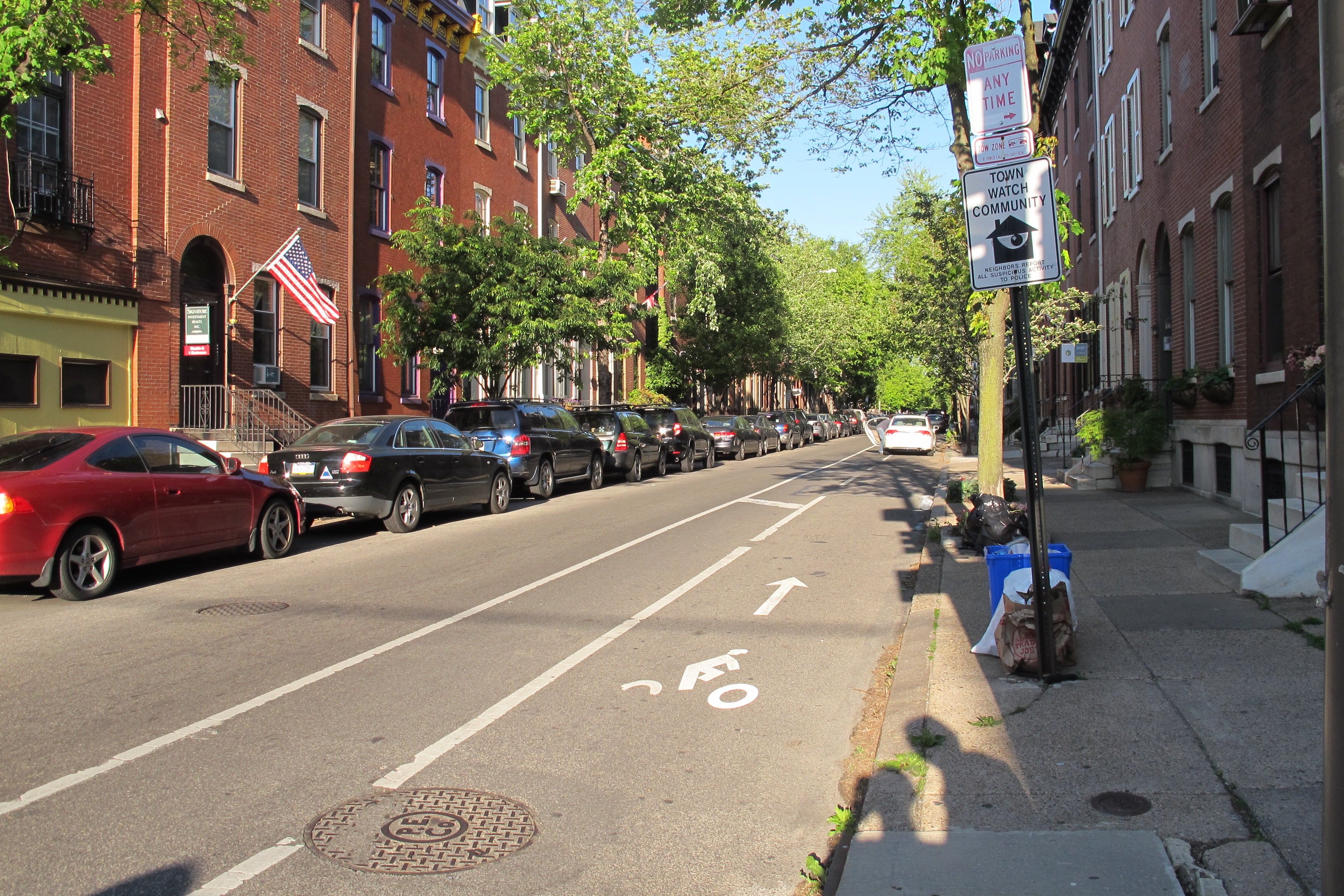Less frequent paving creates challenge for Streets Department’s bike lane painting

Five years ago, the Philadelphia Department of Streets was paving 200 miles of roadway per year. This year, the department will pave just 20 miles due to funding and capacity constraints. This poses a challenge when it comes to expanding the city’s bike lane network.
Between 1993 and 2012, when the Philadelphia Pedestrian and Bicycle Plan was published, Philadelphia painted more than 230 miles of bike lanes. The plan proposed expanding that grid of bike-friendly streets to roughly 460 miles of lanes, but for the already cash strapped Streets Department, in charge of painting many of those bike lanes and sharrows, this is a conundrum.
At Tuesday’s Greater Philadelphia Pedestrian and Bicycle Summit, the Streets Department’s Darin Gatti, chief engineer and surveyor, and Stephen Lorenz explained some of the difficulties the department faces when it comes to painting new bike lanes.
Less paving requires more painting
The bulk of changes made to bike lanes is done when roads are repaved or resurfaced and the line striping and painting equipment is already on site. With so few paving projects slated for this year, though, the Streets Department has to step up its striping efforts, both to repaint roads overdue for paving and to keep up with the demand for new bike lanes.
The paint used for striping lasts between one and two years. Thermoplastic pavement markings can last between seven and 10 years.
The department used to repave or resurface roads every seven to 10 years, at which time they could redo the thermoplastic markings. Now, due to financial constraints, roads are being resurfaced and repaved every 12 to 15 years, and Streets has to repaint lines and markings before the road is ready for full overhaul. This extra painting is another costly endeavor.
To make matters worse, the Streets Department only has one line striping crew. It hopes to have three crews by the end of the summer.
“It doesn’t sound like a lot for the fifth largest city, but from where we were, it’s better,” Lorenz said.
And of course, the line striping equipment is nearing 10 years old. Lorenz said he hopes to get new equipment next year.
Bike lane cost and maintenance
As bicycle advocates and the city push for more bike lanes and sharrows, the cost of those features needs to be factored in.
For the Streets Department to install one sharrow is approximately $110. If the city hires a contractor, the cost jumps to an estimated $350, Gatti said. The “greenback sharrows,” like those being installed along the 58th Street Greenway, cost roughly $850 per sharrow, and the green lanes – like those on the South Street Bridge and Ben Franklin Parkway – are about $9 per square foot.
Right now the Streets Department does not have the means to repair those green bike lanes, so in places where the lane might be repaved after utility work, the lanes are at risk of becoming patchy.
“These are the challenges we’re facing in trying to maintain the stuff that’s out there,” Gatti said. “I’m not saying we’re not going to maintain them but we’re trying to find the best way to do so.”
Bike network expansion
Despite its limitations, the department will continue to help expand the bike network. Like many others working towards this goal, the Department is looking to where new lanes might connect with existing lanes. But, Gatti said, the “low hanging fruit” might be gone.
Because Philadelphia has already painted so many bike lanes, the lanes exist on many of the wider, slower, naturally bike friendly roads. As the city looks to add more bike lanes, it will most likely be putting them on narrower streets. Gatti said he predicts the new lanes will be more challenging and get more resistance from community members.
Which bike lanes get painted first during this paving and resurfacing season will depend, in part, on the weather and the contractors.
Gatti said the Streets Department usually gives contractors a block of streets that needs work and lets each contractor determine the order in which that work is done. This gives the contractors some flexibility and saves the department some cost.
The much talked about Fairmount Ave bike lanes have a strong showing of community support but do not have final approval from City Council, Gatti said. That project cannot move forward until it has full approval.
One silver lining in all of this is that the Streets Department is now “getting over the hump” of installing the federally mandated ADA accessible curb ramps.
“Once that’s done, it’s done… and then at that point we can go back to the percentages we were using to expand the bike network,” Gatti said.
The department is working on a three-year paving plan, which it hopes to publish as soon as possible and that will be updated on an annual basis.
“The priority is worst first,” Lorenz said.
WHYY is your source for fact-based, in-depth journalism and information. As a nonprofit organization, we rely on financial support from readers like you. Please give today.




